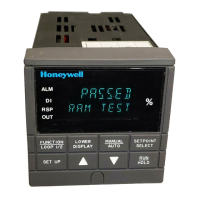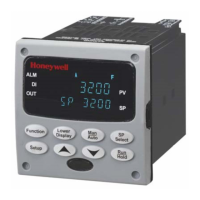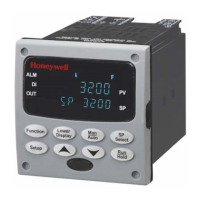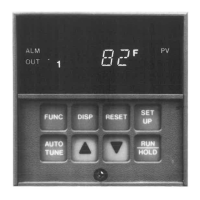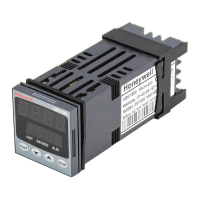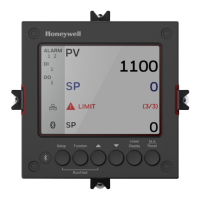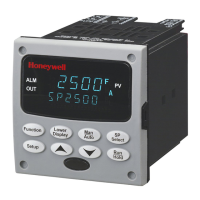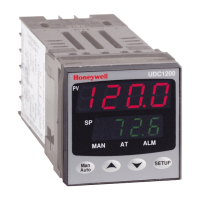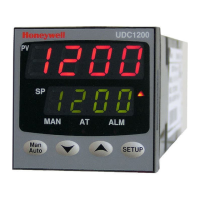Configuration
84 UDC3500 Universal Digital Controller Product Manual 3/07
Function Prompt
Lower Display
Selections or
Range of Setting
Upper Display
Parameter
Definition
LO SEL
(See Note 2)
INPUT LOW SELECT WITH RATIO AND BIAS—
This selection specifies the PV or SP as the lower of
Input A or Input B. The following formula applies:
Alg1 = lower of (Input A x Ratio A + Bias A) or (Input B x Ratio B + Bias B)
√MuDIV
(See Note 1)
MULTIPLIER DIVIDER WITH SQUARE ROOT—
The following formula applies:
Alg1 = K * Sq.Rt. {(Input A x Ratio A + Bias A) x (Input C x Ratio C + Bias C) / (Input B * Ratio B + Bias
B)}
x (Calc Hi – Calc Lo) + Alg1Bias
See Figure 3-1 at the end of this section for an example of Mass Flow
Compensation using the Multiplier/Divider Algorithm.
√MULT
(See Note 1)
MULTIPLIER WITH SQUARE ROOT—The following
formula applies:
Alg1 = K x Sq.Rt. {(Input A x Ratio A + Bias A) x (Input B x Ratio B + Bias B) x
(Input C x Ratio C + Bias C)} x (Calc Hi – Calc Lo) + Alg1Bias
MuDIV
(See Note 1)
MULTIPLIER DIVIDER—The following formula
applies:
Alg1 = K x [{(Input A x Ratio A + Bias A) x (Input C x Ratio C + Bias C)} / (Input B x Ratio B + Bias B)]
x (Calc Hi – Calc Lo) + Alg1Bias
MULT
(See Note 1)
MULTIPLIER—The following formula applies:
Alg1 = K x [(Input A x Ratio A + Bias A) x (Input C x Ratio C + Bias C) x (Input B x Ratio B + Bias B)]
x (Calc Hi – Calc Lo) + Alg1Bias
CARB A
CARBON POTENTIAL A—Make this selection if
you have a Cambridge or Marathon monitor type
Zirconium Oxide sensor. It should also be used if
using an Automotive probe (no thermocouple). This
algorithm requires a temperature range within the
region of 1500 to 2000°F. See
Carbon/Oxygen/Dewpoint Notes.
CARB B
CARBON POTENTIAL B—Make this selection if
you have a Corning type Zirconium Oxide sensor.
This algorithm requires a temperature range within
the region of 1500 to 1800°F. See
Carbon/Oxygen/Dewpoint Notes.
CARB C
CARBON POTENTIAL C—Make this selection if
you have an A.A.C.C. type Zirconium Oxide sensor.
This algorithm requires a temperature range within
the region of 1500 to 1900°F. See
Carbon/Oxygen/Dewpoint Notes.

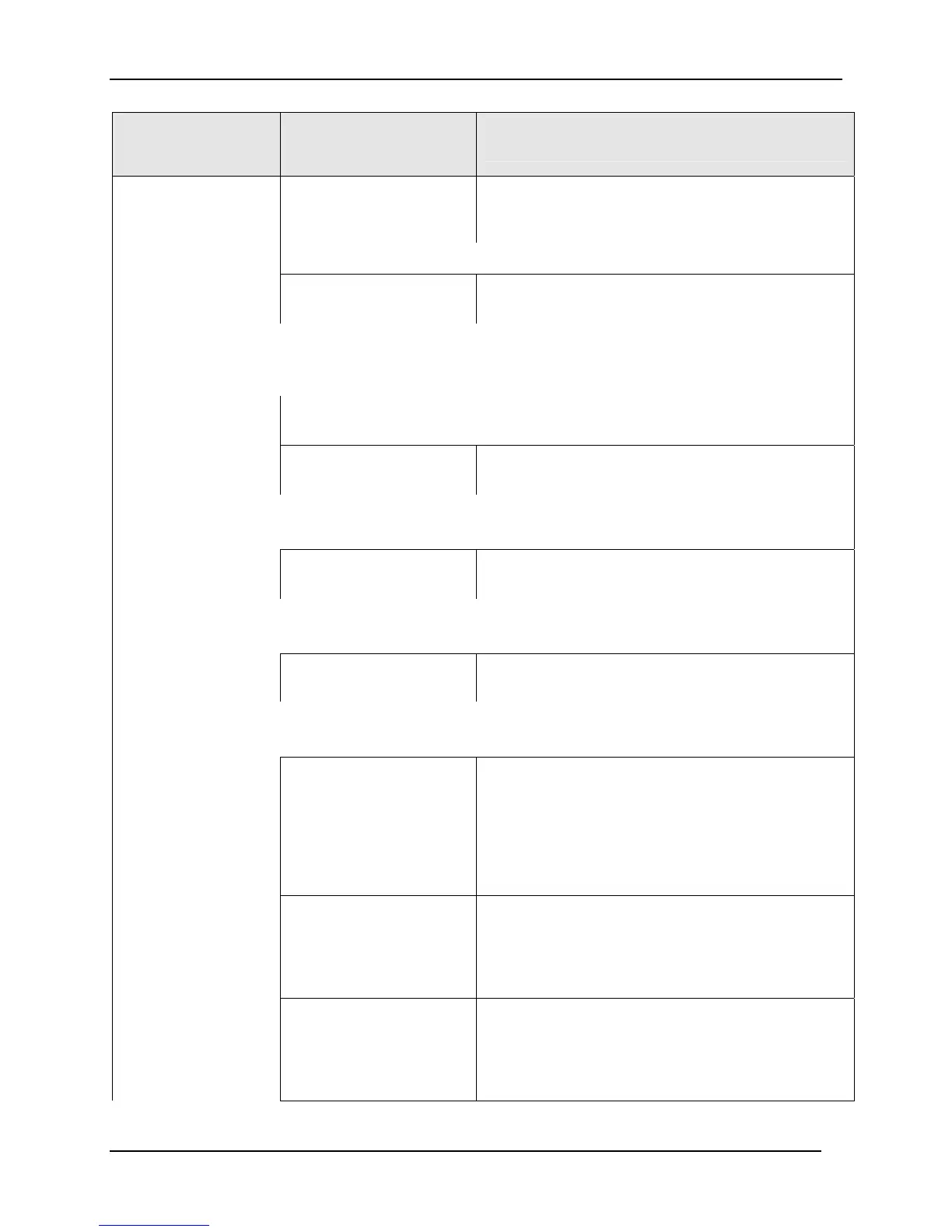